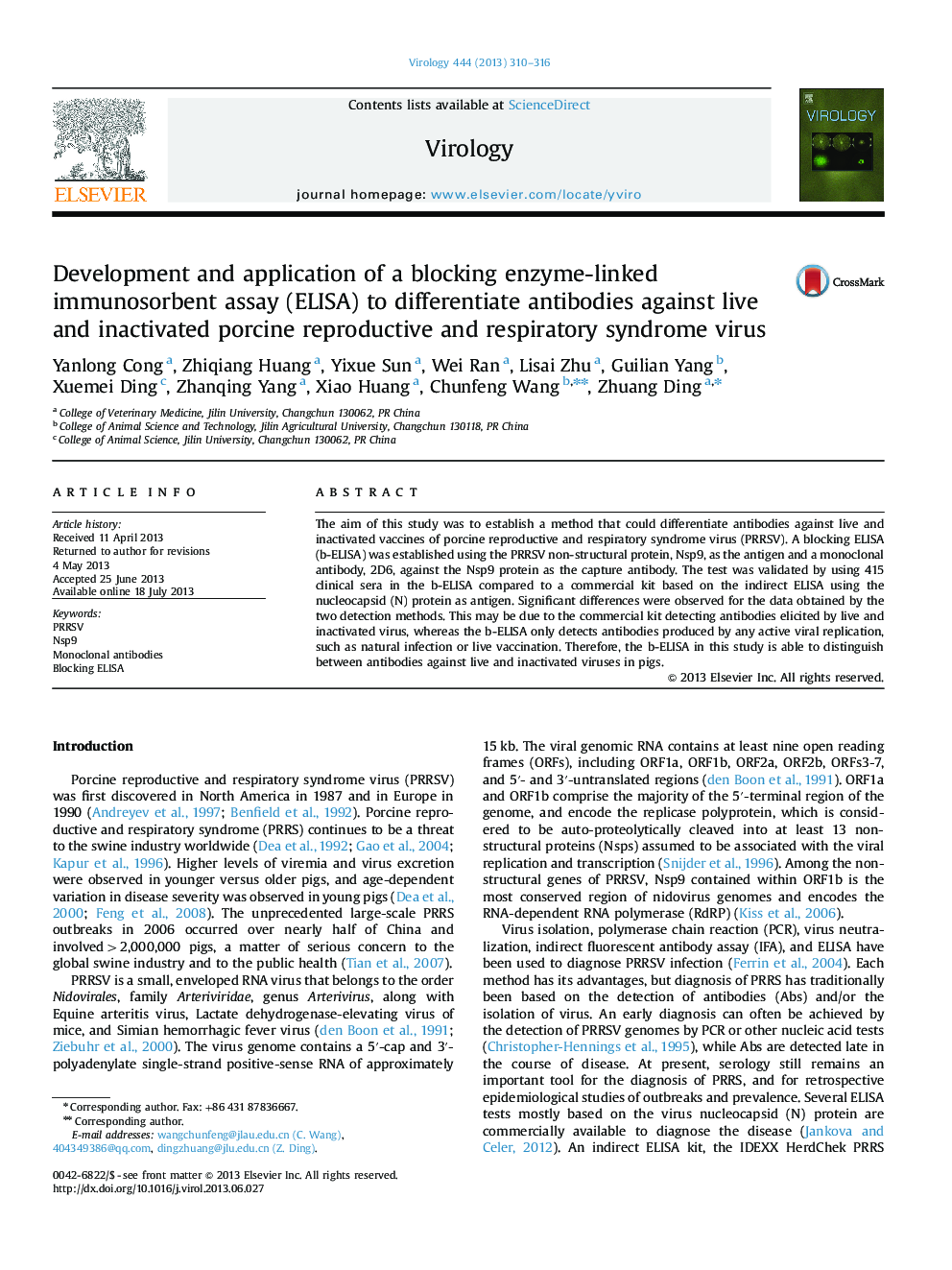| Article ID | Journal | Published Year | Pages | File Type |
|---|---|---|---|---|
| 6140897 | Virology | 2013 | 7 Pages |
Abstract
The aim of this study was to establish a method that could differentiate antibodies against live and inactivated vaccines of porcine reproductive and respiratory syndrome virus (PRRSV). A blocking ELISA (b-ELISA) was established using the PRRSV non-structural protein, Nsp9, as the antigen and a monoclonal antibody, 2D6, against the Nsp9 protein as the capture antibody. The test was validated by using 415 clinical sera in the b-ELISA compared to a commercial kit based on the indirect ELISA using the nucleocapsid (N) protein as antigen. Significant differences were observed for the data obtained by the two detection methods. This may be due to the commercial kit detecting antibodies elicited by live and inactivated virus, whereas the b-ELISA only detects antibodies produced by any active viral replication, such as natural infection or live vaccination. Therefore, the b-ELISA in this study is able to distinguish between antibodies against live and inactivated viruses in pigs.
Related Topics
Life Sciences
Immunology and Microbiology
Virology
Authors
Yanlong Cong, Zhiqiang Huang, Yixue Sun, Wei Ran, Lisai Zhu, Guilian Yang, Xuemei Ding, Zhanqing Yang, Xiao Huang, Chunfeng Wang, Zhuang Ding,
